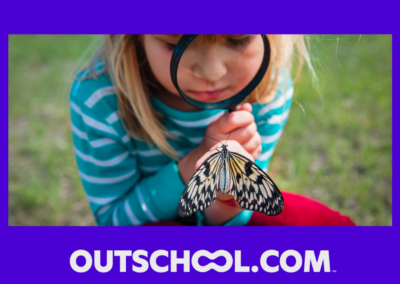Project-Based Learning (PBL) is a dynamic instructional approach that empowers learners to tackle real-world problems and develop critical skills through engaging, hands-on experiences. In this article, we’ll explore what PBL is, how it differs from traditional projects, its benefits, and practical ways to implement it in your Outschool classes.
What is Project-Based Learning?
PBL is an instructional method where learners work on a project over an extended period to solve a real-world problem or answer a complex question. Unlike traditional projects, which are often surface-level and completed after a lesson, PBL is the “main course” of learning, fostering deep engagement, critical thinking, and collaboration.
Project vs. Project-Based Learning
| Projects | Project-Based Learning |
| Quick and surface-level | Long-term and in-depth |
| Focused on completing a task | Focused on solving real-world problems |
| Intellectually light | Promotes higher-order thinking |
| Typically follows a lesson/unit | Drives the learning process |
Why Use Project-Based Learning?
Research highlights the numerous benefits of PBL for learners across all ages:
- Real-World Application
PBL connects learning to practical, real-life scenarios, making education relevant and meaningful. - Higher Engagement and Motivation
Learners take ownership of their education, designing projects that interest them, which fosters intrinsic motivation. - Skill Development
PBL helps learners build critical skills, such as collaboration, communication, problem-solving, and adaptability. - Preparation for the Future
By engaging in authentic problem-solving and decision-making, learners gain skills necessary for success in higher education and the workforce.
Implementing PBL on Outschool
Steps for Success
Implementing PBL requires planning, creativity, and a commitment to learner-driven experiences. Here’s a roadmap:
- Define a Real-World Problem
Start by identifying an issue that resonates with your learners. Whether it’s environmental conservation or historical analysis, the project should be authentic and engaging. - Incorporate Learner Choice
Allow learners to select topics or methods that interest them, promoting agency and ownership. - Guide the Process
Facilitate brainstorming, research, and project development. Act as a mentor rather than a traditional instructor. - Promote Collaboration
Encourage learners to work together, share ideas, and build on one another’s strengths. - Present and Reflect
Have learners share their projects with a real audience—whether that’s classmates, families, or community organizations—and reflect on their learning journey.
Examples of PBL Across Age Groups
Here are practical examples of how PBL can be adapted for various age ranges and subjects:
Early Learners (Ages 3–6)
Goal: Develop fine motor skills and creativity.
- Project: Create a drawing of an animal and describe its traits.
- PBL Activity: Design a new animal using digital or physical art tools. Learners answer questions about their animal’s features and habitat, fostering critical thinking.
Early Elementary (Ages 6–9)
Goal: Increase reading comprehension.
- Project: Create a poster about a favorite book.
- PBL Activity: Transform a book into a graphic novel or digital presentation, comparing key themes with classmates’ books.
Upper Elementary to Middle School (Ages 10–13)
Goal: Build environmental awareness.
- Project: Make a poster about climate change.
- PBL Activity: Research a local environmental issue and create a campaign to educate their community, including actionable solutions.
High School (Ages 14–18)
Goal: Develop persuasive writing and public speaking skills.
- Project: Participate in a classroom debate.
- PBL Activity: Research a current issue, create a blog or vlog post to advocate for a solution, and present findings in a debate or community forum.
Overcoming Challenges in the Online Classroom
Adapting PBL to an online environment can be challenging, but with the right tools and strategies, it’s entirely possible:
- Use Collaborative Tools
Platforms like Padlet, Google Workspace, and Canva allow learners to work together and share ideas in real time. - Leverage Technology
Gamification, virtual simulations, and digital storytelling tools can enhance the PBL experience and engage learners. - Incorporate Asynchronous Activities
Assign research or creative tasks outside of live classes to make the most of synchronous time for collaboration and discussion. - Engage Families and Communities
Encourage learners to connect with local experts, organizations, or their own communities to add depth to their projects.
Tips for Successful PBL Implementation
- Clearly Communicate Expectations
Set clear goals and guidelines for projects to ensure learners and families understand the process and its value. - Provide Ongoing Support
Act as a mentor, offering guidance and feedback while allowing learners to take the lead. - Celebrate Progress and Success
Showcase learners’ work through presentations, exhibitions, or online portfolios to build confidence and motivation.
Conclusion
Project-Based Learning is a transformative approach that empowers learners to think critically, collaborate effectively, and engage deeply with their education. By implementing PBL in your Outschool classes, you can foster a love of learning and equip students with the skills they need for future success.
Explore resources like Padlet for inspiration and collaboration tools, and don’t forget to share your own PBL ideas with the Outschool educator community. Let’s work together to create meaningful, impactful learning experiences!




















